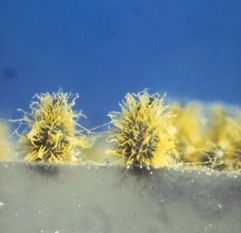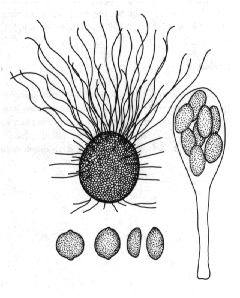Main page <> Index of descriptions <> Previous description <> Chaetomium <> Next description
Chaetomium


Characterized by densely hairy, egg-shaped fruiting bodies (perithecia) containing asci, which in turn enclose 4-8 brown spores (ascospores). The perithecial hairs can take a variety of forms, depending upon the species. The ascospores collect in a dense mass outside the perithecium. Most species are strong decomposers of cellulose and occur wherever this substrate is abundant, such as in soil, dung, or rotting plants.
Classification: Chaetomiaceae (Sordariomycetidae). Anamorphs: Acremonium, Botryotrichum, Chrysosporium, Scopulariopsis, Trichocladium, or lacking. Ref: Ames 1963; Arx et al., 1986; Seth 1970.
Recently Dr. Adrian Carter has recently offered online his doctoral thesis on Chaetomium. Although written back in 1982 but is still a primary reference source for this difficult genus.